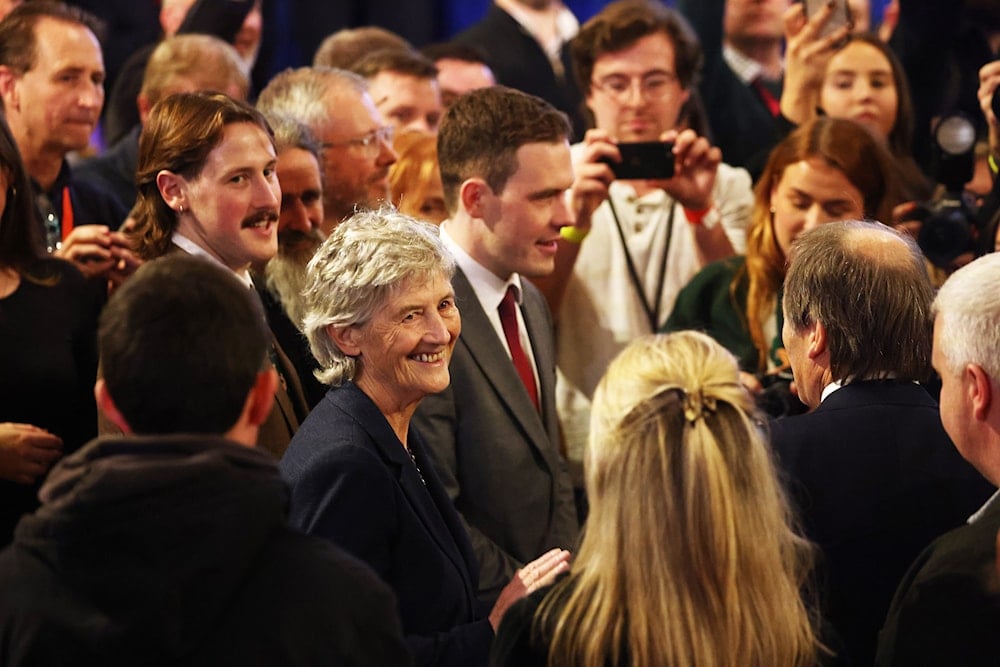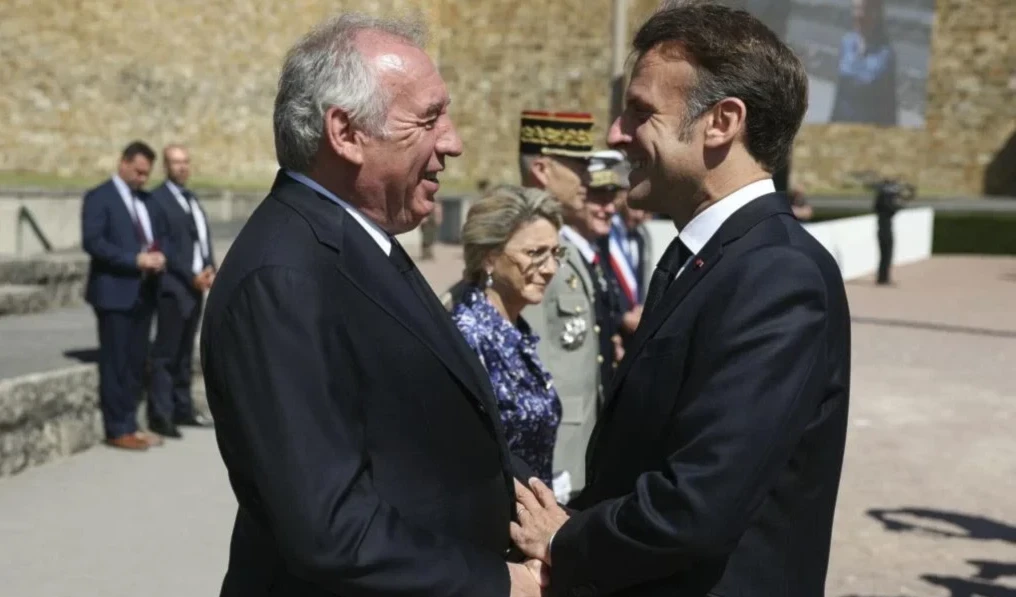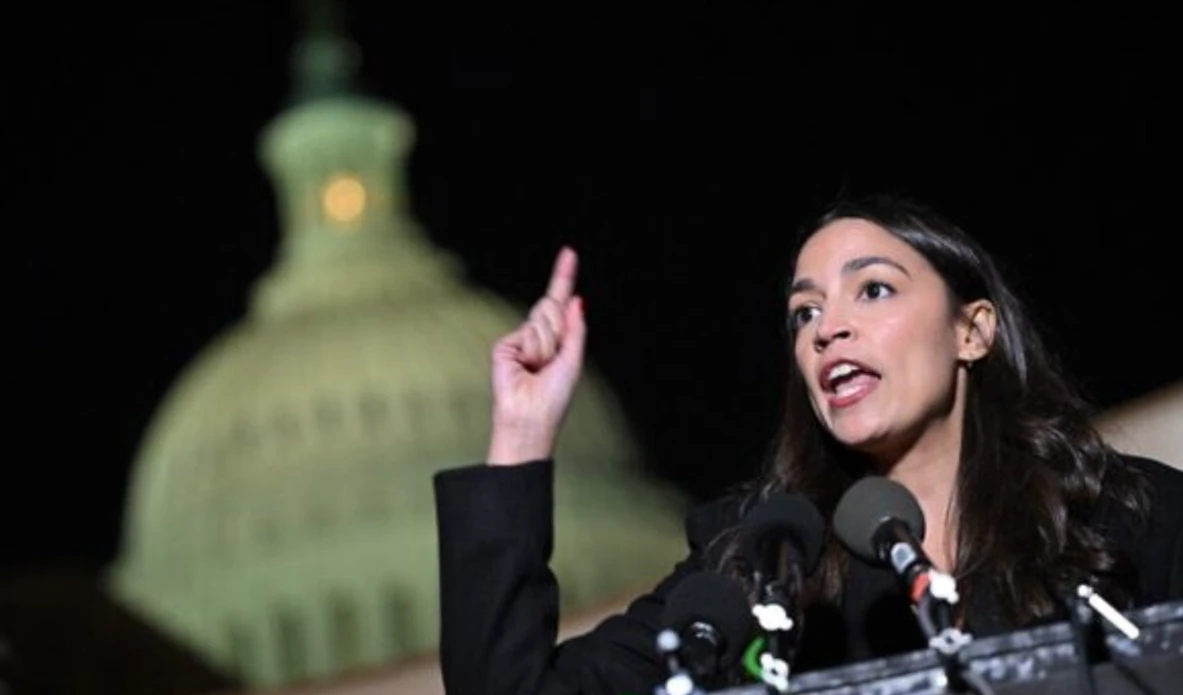Connolly’s victory heralds a new era of progressive Irish politics
Connolly’s victory reflects Ireland’s appetite for political change, ending an era of establishment dominance and ushering in a new progressive moment.
-

Catherine Connolly smiles to supporters after being elected as the new President of Ireland at Dublin Castle, Ireland, Saturday, Oct. 25, 2025. (AP)
The election of Catherine Connolly as Ireland’s new president has breathed new life into the nation’s political scene, challenging entrenched assumptions and unsettling the governing establishment, Irish Times columnist Justine McCarthy writes in a new piece published by The Guardian.
The independent, left-wing TD, known for her calm demeanor and understated presence, secured a resounding victory to succeed outgoing president Michael D. Higgins, the beloved 84-year-old poet who has served as a cultural touchstone for more than a decade.
Her ascent to the Aras has upended traditional party calculations and sent shockwaves through both Fianna Fail and Fine Gael.
Fianna Fail’s campaign collapsed in spectacular fashion after its candidate, Jim Gavin, chosen personally by Taoiseach Micheál Martin for his sporting credentials, was forced to withdraw when it emerged that he had failed to repay a €3,300 debt to a former tenant dating back to 2009. Though his name remained on the ballot, the scandal left Martin politically exposed.
McCarthy captured the political fallout succinctly, writing, “How Martin must rue the day Live Aid founder Bob Geldof phoned him last summer seeking the party’s nomination and he demurred because he already had Gavin in mind.”
The left unites, and wins
The political commentariat was equally blindsided. When Sinn Fein threw its weight behind Connolly, party leader Mary Lou McDonald called the move a potential “gamechanger.” Pundits scoffed, until it was.
For the first time, five left-wing parties, Sinn Fein, Labour, the Social Democrats, People Before Profit, and the Greens, joined forces behind a single independent candidate. Connolly’s decisive victory shattered the long-standing notion that Ireland’s fragmented left could never cooperate effectively.
Her triumph also stood out amid an EU political landscape increasingly tilted to the right, where nationalism, racism, and anti-feminism have gained ground.
A tradition of outsiders , and a rejection of establishment politics
Connolly’s candidacy struck a chord with voters who have long favored outsider presidents, figures such as Mary Robinson, who in 1990 broke both gender and ideological barriers. For decades, Irish voters have shown a preference for presidents who embody independence of thought, even when their parliamentary choices suggest otherwise.
Her campaign also benefited from what many dubbed the “ABH factor”, “Anybody But Humphreys.” Heather Humphreys, a former Fine Gael minister brought out of retirement, struggled to gain traction despite being promoted as a unifying figure.
When Fine Gael’s campaign turned negative, releasing an attack video accusing Connolly of hypocrisy for her past legal work representing banks, it backfired spectacularly, alienating voters who balked at what McCarthy later described as “Fine Gael’s Trumpian tactics.”
Connolly’s roots and controversies
Born into a family of 14 children in Galway, Connolly’s biography reflects Ireland’s working-class traditions. She has been anti-war, anti-imperialist, pro-reunification, and a longstanding advocate for disability rights.
Like Higgins, she has criticized the EU’s inaction over “Israel’s” genocide in Gaza. Some of her more pointed remarks, such as comparing Germany’s rearmament to “the situation that prevailed in 1939,” unsettled parts of the electorate. Yet for many, her candor was a welcome contrast to the deferential presidents of the past who “toed the government line to the point of public irrelevance.”
At 68, Connolly is older than Humphreys but managed to galvanize younger voters with her pacifist messaging and grassroots authenticity. Her fluent Irish stood in sharp contrast to Humphreys’ inability to use the language in public, at a time when speaking Irish has become a badge of cultural pride for a new generation inspired by acts like Kneecap.
Many observers see her election as a pivotal moment, one that could lay the groundwork for Ireland’s first genuinely left-leaning government.

 4 Min Read
4 Min Read










